Term 3 Chapter 3 | 6th Maths - Perimeter and Area of Combined Shapes | 6th Maths : Term 3 Unit 3 : Perimeter and Area
Chapter: 6th Maths : Term 3 Unit 3 : Perimeter and Area
Perimeter and Area of Combined Shapes
Perimeter
and Area of Combined Shapes
A Combined shape
is the combination of several closed shapes. The perimeter is calculated by adding
all the outer sides (boundaries) of the combined shape. The area is calculated by
adding all the areas of closed shapes from which the combined shape is formed.
Example 12
Find the perimeter of the given figure.
Solution
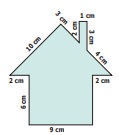
Perimeter = Total length of the boundary
= (6 + 2 + 10 + 3 + 2 + 1 + 3 + 4
+ 2 + 6 + 9) cm
= 48 cm
Example 13
Find the perimeter and the area of the following
‘L’ shaped figure.
Solution
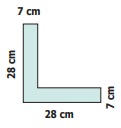
Perimeter
= (28 + 7 + 21 + 21 + 7 + 28) cm.
= 112 cm.
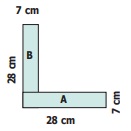
To find the area of the L shaped figure, it is divided
into two rectangles A and B.
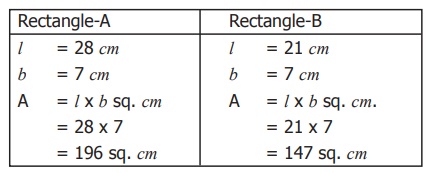
The area of the ‘L’ shaped figure = (196 + 147)
sq. cm
= 343 sq. cm.
Activity
Find the area of the given ‘L’ shaped
rectangular figure by dividing it into squares of equal sizes.
Think
Can you find the area of ‘L’ shaped figure
as the difference between two areas.
Try these
Measure using ruler and find the perimeter
of each of the following diagram.

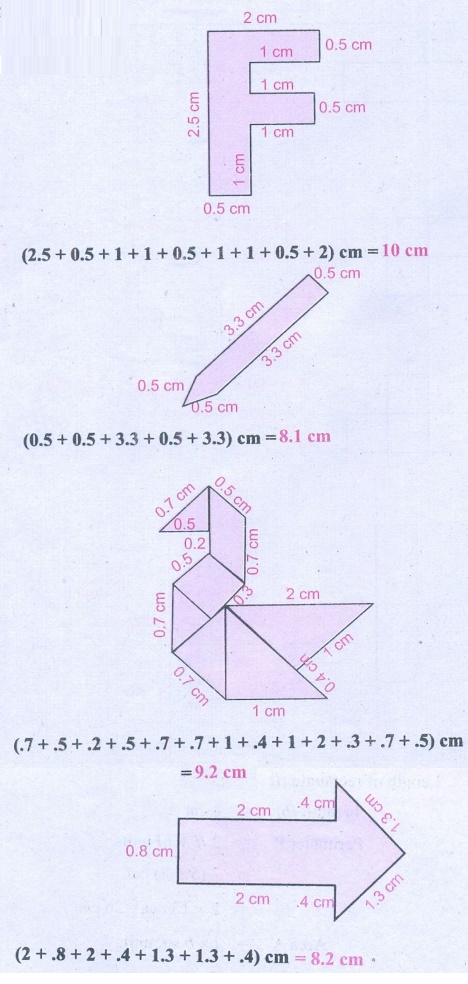
Activity
Form all possible shapes of perimeter
80 cm with 9 identical squares, each of
side 4 cm.
1.
Impact on Removing / Adding a portion from / to a given shape
Consider a rectangle of sides 8 cm and 12 cm.
Length, l = 12 cm; Breadth b = 8 cm.
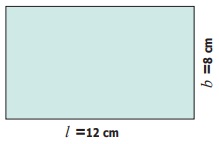
Area, A = (l × b) sq. units.
= 12 × 8
= 96 sq. cm.
Perimeter, P = 2 (l + b) units.
= 2 (12 + 8)
= 40 cm.
Find the area and perimeter of the rectangle in
the following situations and observe the changes.
Situation 1
A square of side 3 cm is cut at a corner of the rectangle.

Area, A = (l × b) – (s × s) sq. units.
= (12 × 8) – (3 × 3)
= 87 sq. cm.
Perimeter, P = (Total boundary) units.
= 8+12+5+3+3+9 = 40 cm.
The perimeter is not changed. But the area is reduced.
Situation 2
A square of side 3 cm is attached to the rectangle.
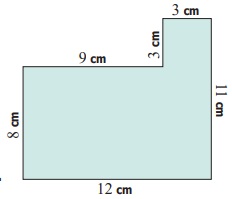
Area, A = (l × b) + (s × s) sq. units.
= (12 × 8) + (3 × 3)
= 105 sq. cm.
Perimeter, P = (Total boundary) units.
= 8+12+11+3+3+9 = 46 cm.
Here both the perimeter and the area are increased.
Example 14
Four identical square floor mats of
side 15 cm are joined together to form either a
rectangular mat or a square mat. Which mat will have a larger area and a longer
perimeter?
Solution
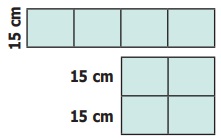
Perimeter of a rectangle, P = 2 (l + b) units.
= 2 (60+15) cm. = 150 cm.
Area of a rectangle, A = (l × b) sq. units.
= 60 × 15 = 900 sq. cm.
Perimeter of a square, P = (4 × s) units
= (4 × 30) cm = 120 cm
Area of a square, A = (s × s) sq.
units.
= 30 × 30 = 900 sq. cm.
There is no change in their areas. But, the rectangular mat will have longer perimeter.
Activity
Cut a rectangular sheet along one
of its diagonals. Two identical scalene right angled triangles are obtained. Join
them along their sides of identical length in all possible ways. Six different
shapes can be obtained. Four of them are given. Find the remaining two
shapes. Find the perimeter of all the six shapes and fill in the table.
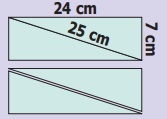
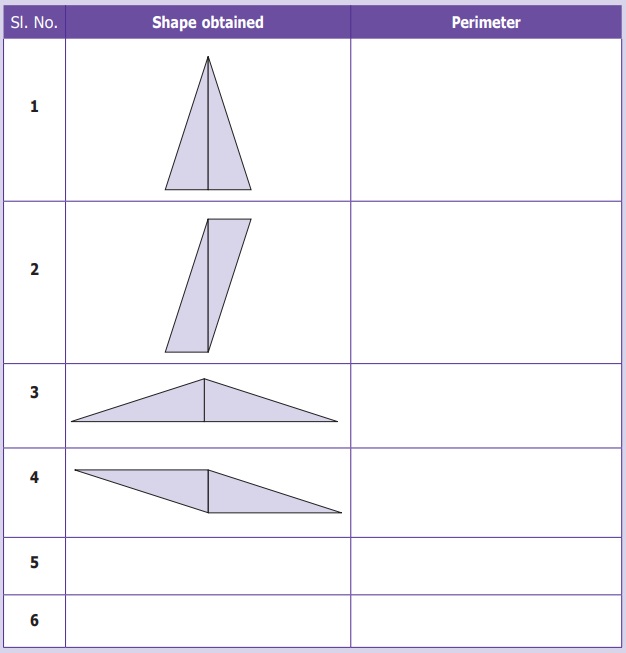
Based on the above activity answer
the following questions:
i) Are the perimeters same for all
the shapes?
ii) Which shape has the longest perimeter?
iii) Which shape has the shortest
perimeter?
iv) Are the areas of all the shapes
same? Why?
DO YOU KNOW?
• Shapes with the same perimeter may
have different areas.
• Shapes with the same area may have
different perimeters.
Related Topics